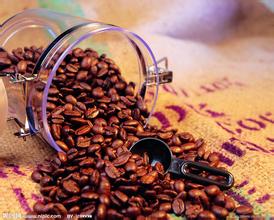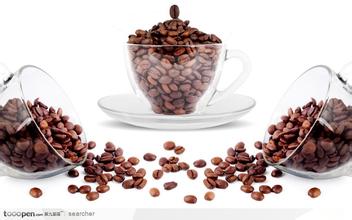Introduction to the method of describing the Flavor of Bolivian Snow vein Manor Coffee with Citrus Fruit
In the past, most of the coffee in Bolivia was of mediocre quality, but in recent years, the production of boutique coffee has developed rapidly, and there have been a lot of pretty good beans. In recent years, the COE (Cup of excellence) system, which was first implemented in Brazil, has gradually become popular. Bolivia has also introduced this system, which, on the one hand, can stimulate the enthusiasm of coffee farmers, on the other hand, it is also to improve the quality of coffee. COE beans are better than ordinary coffee in both raw and roasted coffee.
The aroma of Bolivian coffee is rich and unique, whether it is the aroma of ground beans or the aroma of coffee is quite rich, similar to the mixture of flower and fruit aroma, impressive medium acidity and low acidity, but the feeling is not monotonous, but calm and generous, soft and fresh. In the sour taste, you can even feel the sour taste of citrus fruits.
The overall taste of Bolivian coffee is rich and balanced, in addition to the beautiful sour taste, there is also a shallow chocolate flavor, smooth taste is more smooth, by contrast, the bitter taste is not obvious. The aftertaste of the coffee is very good, and the sweet taste in the mouth lingers after drinking it, and the wonderful experience of this coffee is unforgettable.
Flavor: dry aromas of roasted nuts and almonds, soft acidity of orange and white pomelo on the palate, sweet caramel on the whole, smooth texture of nut milk, cleanliness and balance. The herbal aroma of Yuyun is also quite attractive.
[hand punching reference]
Wash Bolivia by hand with a cup of water, it is recommended to wash Bolivia with 15g powder at 87 degrees water temperature, water powder ratio at 1:15, moderate grinding (small Fuji ghost tooth knife 3.54grind), V60 filter cup, the first injection of 30g water for 25s, injection to 110g water cut off, wait for the powder bed water to half of the water and then water injection, slow water injection until 230g water, the tail section does not want, the extraction time is 2Jiang 00s. Lake Titicaca is located on the Coaya Plateau on the border between Bolivia and Peru. It is the highest and largest freshwater lake in South America, one of the highest freshwater lakes in the world, and the highest navigable lake in the world. It is the third largest lake in South America (after Lake Maracaibo and Patus lagoon). The advantage of Bolivian coffee lies in high altitude and excellent coffee varieties. Here the traditional Tibica and a small amount of Kaddura are highly valued in the world market. In the past, coffee trees in Bolivia used to act as hedges and ornaments around the garden. Real commercial production began in the early 1950s. The coffee industry in Brazil was badly damaged by the great frost in 1957, while Bolivia (Bolivia) benefited and developed rapidly. Bolivian coffee is grown at an altitude of 18000 to 2670 meters above sea level, and the Arabian washed coffee beans are exported to Germany and Sweden. They are not the best in taste today and have a bitter taste.

Important Notice :
前街咖啡 FrontStreet Coffee has moved to new addredd:
FrontStreet Coffee Address: 315,Donghua East Road,GuangZhou
Tel:020 38364473
- Prev

Introduction of Coffee varieties produced by the method of Grinding degree of Coffee in Fire Phoenix Manor, Costa Rica
Product name: Costa Rica Tara Pearl Costa Rica Tarrazu SHB country: Costa Rica production area: Tara Pearl Tarrazu Manor: jaguar Manor El Puma Estate Grade: SHB/EP treatment method: washing fermentation, the latter stage of sun-drying baking degree: medium baking finally talk about personal taste experience. Utensils: Philharmonic pressure, 20 seconds pressure filtration, 88 degrees water temperature, medium
- Next

The authentic Arusha Coffee Estate in Tanzania Flavor Description Taste Introduction
Rainfall types are divided into bimodal distribution and unimodal distribution. The areas with bi-modal rainfall distribution include the provinces around Lake Victoria Basin, the northeast highlands, the coast and the northeast inland. The bi-modal rainfall distribution area is characterized by two long and short rainy seasons. The short rainy season occurs from September to December, and the total rainfall can reach 200-500 mm. The long rainy season occurs from March to May.
Related
- Does Rose Summer choose Blue, Green or Red? Detailed explanation of Rose Summer Coffee plots and Classification in Panamanian Jade Manor
- What is the difference between the origin, producing area, processing plant, cooperative and manor of coffee beans?
- How fine does the espresso powder fit? how to grind the espresso?
- Sca coffee roasting degree color card coffee roasting degree 8 roasting color values what do you mean?
- The practice of lattes: how to make lattes at home
- Introduction to Indonesian Fine Coffee beans-- Java Coffee producing area of Indonesian Arabica Coffee
- How much will the flavor of light and medium roasted rose summer be expressed? What baking level is rose summer suitable for?
- Introduction to the characteristics of washing, sun-drying or wet-planing coffee commonly used in Mantenin, Indonesia
- Price characteristics of Arabica Coffee Bean Starbucks introduction to Manning Coffee Bean Taste producing area Variety Manor
- What is the authentic Yega flavor? What are the flavor characteristics of the really excellent Yejasuffi coffee beans?

